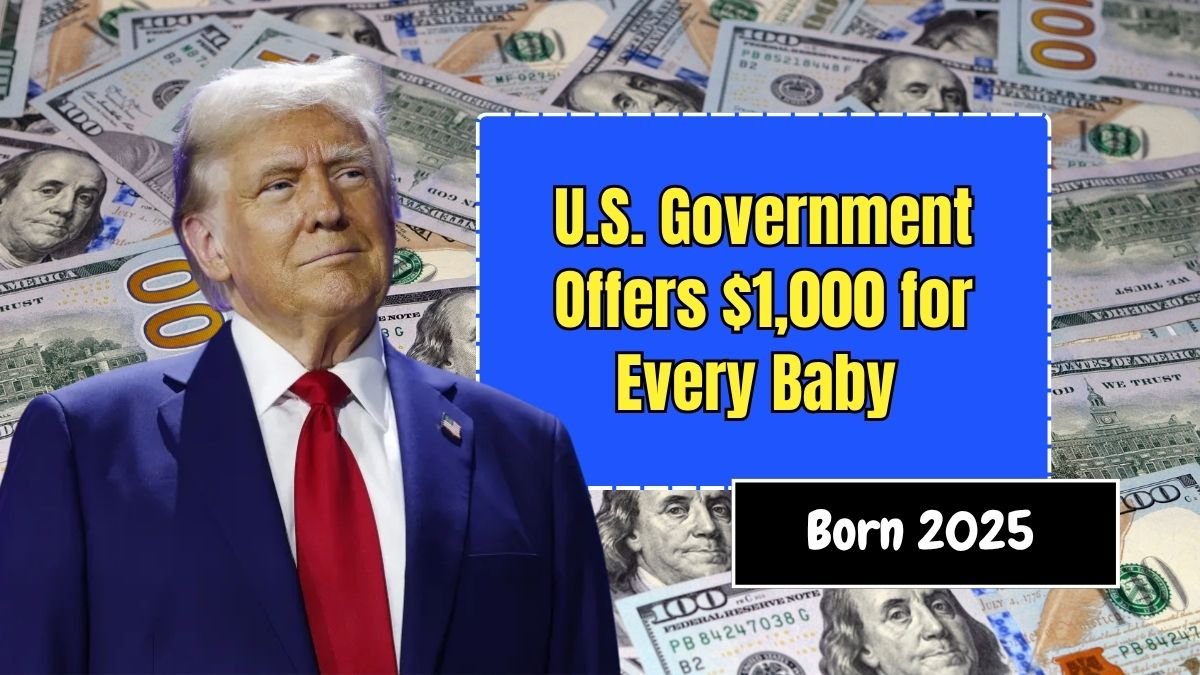In a bold new proposal under the One Big Beautiful Bill (OBBBA), the Trump administration has introduced a plan that gives every child born from 2025 to 2028 a $1,000 “stimulus check” deposited in a tax‑advantaged “Trump Account” — with the potential for that sum to grow to $93,000 (or more) by maturity under compound interest.
What Is the “Trump Account” Stimulus for Newborns?
Under the OBBBA, every newborn child born between January 1, 2025, and December 31, 2028 will have an account automatically seeded with $1,000 by the federal government.
These “Trump Accounts” are custodial investment accounts (somewhat akin to 529 plans or Roth‑IRA style accounts) that grow tax‑deferred so long as withdrawals follow qualified rules.
Parents, guardians, or others may make additional contributions (up to a cap) to the account, which can accumulate until the child reaches certain ages.
The intention: give children a financial head start from birth and incentivize long‑term saving.
Key Facts & Figures in Table Form
| Component | Detail / Number |
|---|---|
| Seed Amount at Birth | $1,000 |
| Eligible Birth Years | 2025 through 2028 |
| Tax Treatment | Tax‑deferred growth (not taxed until withdrawal under rules) |
| Additional Contribution Cap | Up to $5,000 per year by family/others |
| Withdrawal Rules | Penalty‑free for qualified purposes (education, first home, retirement) |
| Penalty for Non‑Qualified Use | 10% penalty (similar to IRAs) |
| Projected Value at Age 67 (at 7% return) | ≈ $93,000 (assuming no additional contributions) |
| Lower Growth Estimate (4%) | ≈ $13,800 (starting from $1,000) |
| Moderate Growth Estimate (5%) | ≈ $26,000+ |
How the Program Works & Access
- Automatic deposit: The $1,000 initial amount is credited to the child’s Trump Account shortly after birth.
- Additional contributions: Parents or guardians may add up to $5,000 per year, part of which may be tax-deductible under rules.
- Investment: Funds are invested in diversified index or moderate-risk portfolios.
- Qualified withdrawals: After certain ages, funds may be used for education, first home purchases, or retirement without penalties.
- Penalty for misuse: If withdrawn prematurely for non-qualified use, a 10% penalty is assessed.
The law establishing these accounts was passed as part of OBBBA on July 4, 2025.
Projected Growth & Why $93,000 Is Possible
The most optimistic projection for the seed $1,000 comes under assumptions of 7% annual growth sustained over many decades. At that rate, boosts from compound interest could drive the account value to around $93,000 by retirement age.
More conservative estimates at 4% yield ~$13,800, and 5% yields ~$26,000+.
These projections typically exclude additional contributions by parents, which, if made, can push the final total much higher.
Analysts note that such a program mirrors “baby bond” proposals and could greatly influence intergenerational wealth building.
Eligibility & Limitations
- Must be a U.S. citizen child born between 2025 and 2028.
- A parent or guardian with a Social Security Number is required to open/manage the account.
- Accounts cannot be opened before July 2026, even though babies born earlier are eligible.
- Children born before 2025 may open accounts retroactively—but they do not receive the original $1,000 seed.
- The program is currently set as a pilot for 4 years, subject to evaluation and extension.
Critics also warn this could be a “back door” attempt to reshape or privatize parts of Social Security by shifting funds into individual accounts.
Risks & Criticisms
- The actual returns depend heavily on market performance; 7% growth is optimistic.
- Families with fewer resources may not be able to make large additional contributions, limiting gains.
- Some worry that this moves the U.S. toward a privatized retirement model, undermining safety net programs.
- The scale of rollout and administrative complexity may cause inequalities in access.
Trump’s new $1,000 “Baby Bonus” via Trump Accounts is a landmark pro-family measure that could reshape how Americans save from birth.
While $93,000 is a headline-grabbing projection, it relies on sustained market returns and disciplined additional contributions.
For many families, this could deliver a meaningful financial boost at key life stages—college, a home purchase, or retirement. But it also raises legitimate concerns about long-term fiscal impact and equity.



